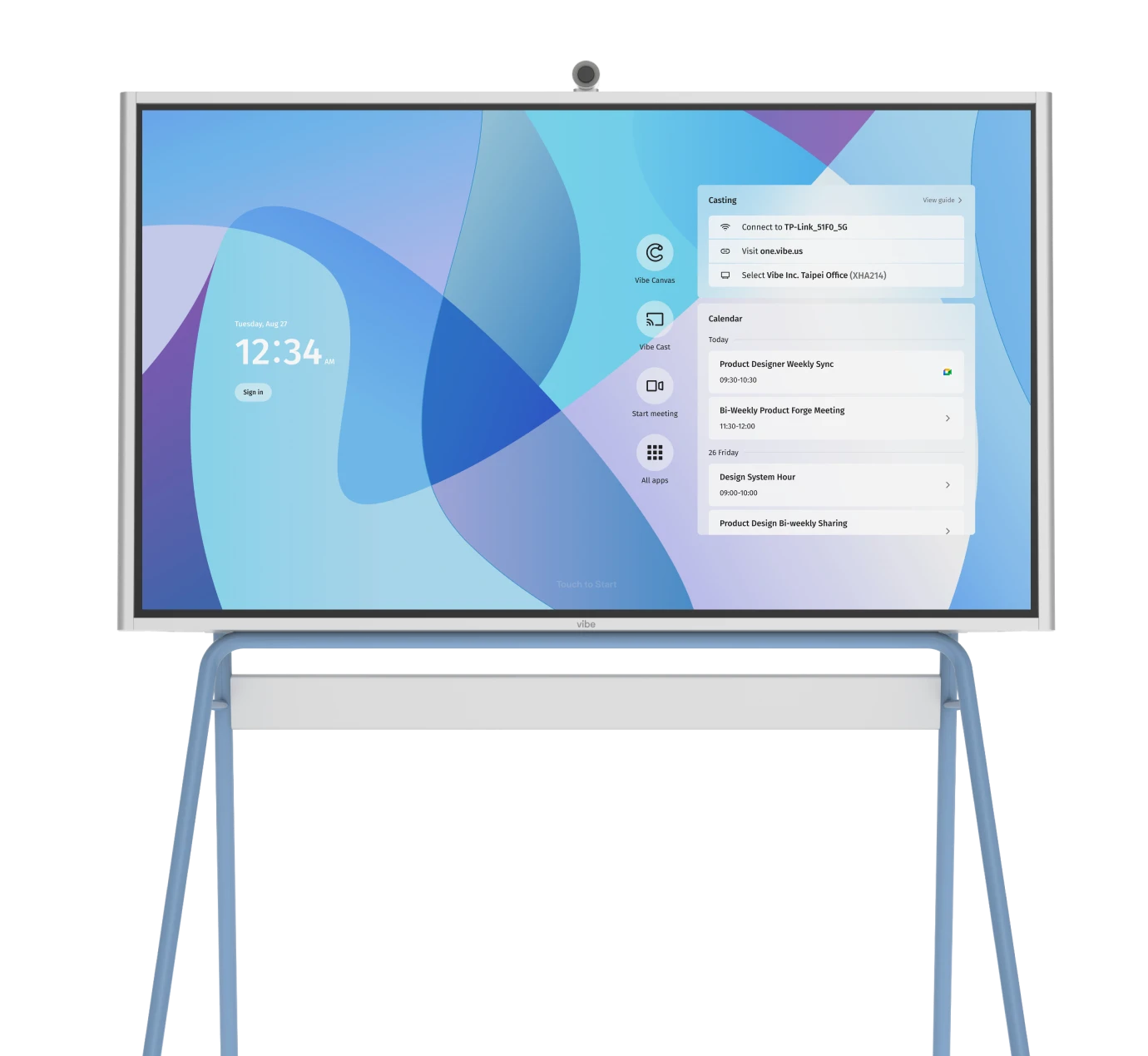Whether you’re outfitting a classroom, corporate office, or home workspace, understanding the different types of whiteboards and their features will help you make an informed decision. This comprehensive guide explores everything you need to know about whiteboards to find the perfect match for your specific needs.
What are Whiteboards?
A whiteboard (also known as a marker board, dry erase board, dry-wipe board, or pen-board) is a glossy, usually white surface designed for non-permanent markings. Unlike traditional blackboards, whiteboards offer a smoother surface that allows for quick marking and erasing without the mess of chalk dust. These versatile tools serve as blank canvases for writing, drawing, and visualizing ideas. The term "whiteboard" has also expanded to include digital whiteboard versions that simulate physical whiteboards, enabling virtual collaboration and interaction.
The Evolution of Whiteboards
The journey from traditional blackboards to today’s smart whiteboards reflects a fascinating progression in collaborative tools. Blackboards dominated educational and meeting spaces for centuries until the first whiteboard appeared in an Illinois classroom in 1937, installed by Paul F. Born.
Commercial whiteboards emerged in the 1960s but gained significant traction only after Jerry Woolf developed dry-erase markers in the 1970s. This innovation eliminated the need for wet-wiping, making whiteboards considerably more practical for everyday use.
Throughout the 1980s and 1990s, whiteboards steadily replaced chalkboards in schools and offices, appreciated for their cleaner appearance and absence of chalk dust. Magnetic functionality soon followed, expanding their versatility beyond simple writing surfaces.
The digital revolution brought interactive whiteboards in the early 2010s, merging traditional visual communication with technology. These digital boards enabled more dynamic presentations and introduced the possibility of saving content electronically.Today’s smart whiteboards represent the latest evolution, featuring cloud connectivity, multi-device integration, and real-time remote collaboration capabilities.
Types of Modern Whiteboards
Whiteboards have come a long way since their inception, evolving to meet diverse needs across various settings. Today, there’s a wide array of options available, each designed to cater to specific requirements and preferences. Let’s explore the different types of modern whiteboards:
|
Type |
Key Features |
Best For |
Price Range |
Portable |
Lightweight, mobile, often double-sided |
Training rooms, flexible spaces, student work |
$-$$ |
Wall-Mounted |
Fixed installation, various larger sizes |
Classrooms, conference rooms, dedicated spaces |
$$-$$$ |
Magnetic |
Steel-backed, supports magnets |
Displaying documents, collaborative planning |
$$-$$$ |
Non-Magnetic |
Basic writing surface, typically melamine |
Budget-conscious environments, basic needs |
$ |
Glass |
Premium finish, stain-resistant, modern aesthetic |
Executive spaces, design-focused environments |
$$$-$$$$ |
Online or Digital |
Virtual, unlimited space, remote access |
Distributed teams, remote collaboration |
$-$$$ (free or subscription) |
Interactive or Smart |
Touch-sensitive, digital integration, cloud content saving |
Smart classrooms, conference rooms, hybrid-workplaces, design spaces |
$$$$$ |
Comparison table of modern whiteboards showing different types, their features, recommended use cases, and price ranges.
Benefits of Whiteboards
From enhancing collaboration to improving visual communication, these versatile surfaces provide significant value. Here are some key benefits that make whiteboards essential in today’s workplaces, classrooms, and creative spaces.
Fostering Effective Collaboration and Brainstorming
Whiteboards create a shared visual medium where teams can collectively develop ideas. During brainstorming sessions, they level the playing field by enabling simultaneous contributions that enhance engagement and diversify outcomes.
The blank canvas of a whiteboard encourages freeform expression, liberating individuals to sketch diagrams, charts, and mind maps that show complex concepts without constraints. This freedom often leads to creative breakthroughs and innovative solutions to complex problems.
Visualizing Concepts and Tracking Progress
Whiteboards excel at making abstract concepts tangible. They provide space to map out workflows, relationships between ideas, and project timelines, helping teams see the bigger picture and understand how individual contributions fit into the overall strategy.
The spatial representation of ideas on a whiteboard allows participants to make connections between disparate concepts more easily than with verbal descriptions alone. This visual thinking enhances cognitive processes and improves memory retention, making it easier for participants to generate and recall ideas.
Enhancing Meetings and Presentation Engagement
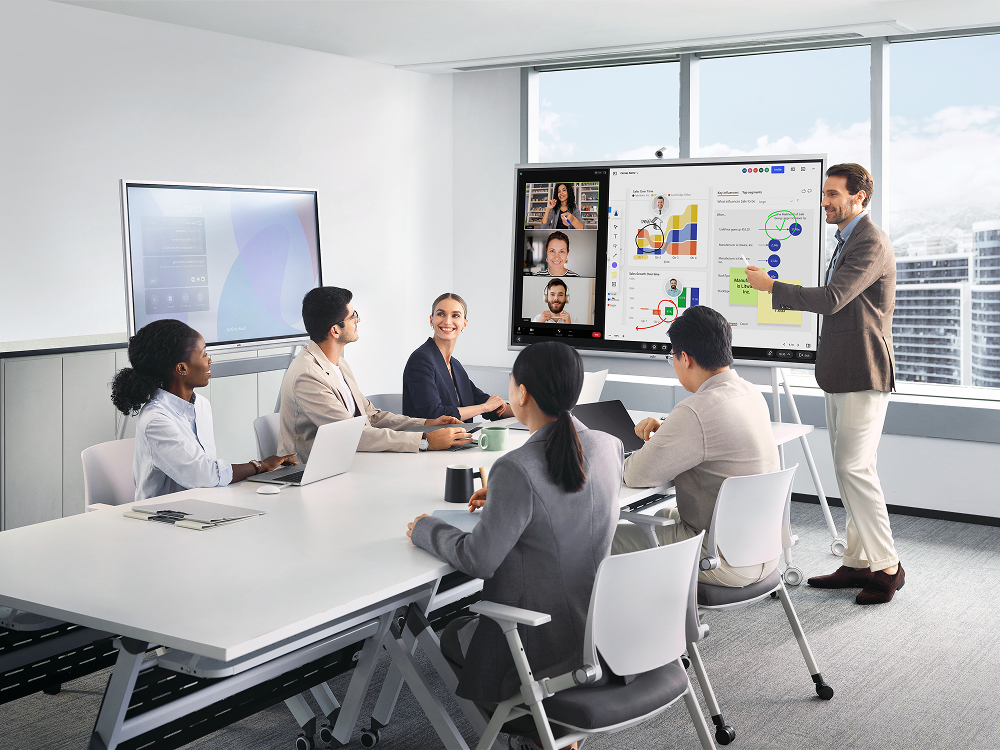 Team collaborating around an interactive whiteboard during a meeting, using digital tools to enhance engagement and presentation effectiveness.
Team collaborating around an interactive whiteboard during a meeting, using digital tools to enhance engagement and presentation effectiveness.Whiteboards transform passive listeners into active contributors during meetings and presentations. By visually capturing key points and diagrams, they boost information retention and allow for instantaneous adaptation of ideas.
This interactivity keeps participants invested and promotes a sense of shared ownership of outcomes during collaboration. As ideas are shared and built upon in real-time, whiteboard sessions often spark mutually enhancing interactions that lead to breakthrough innovations.
6 Key Features to Consider When Choosing a Whiteboard
Selecting the right whiteboard involves more than just picking a size or style. To ensure you get the most value and functionality from your investment, it’s important to consider several key features. These factors will influence not only the whiteboard’s performance but also its longevity and suitability for your specific needs.
1. Type and Mobility
Consider whether you need a fixed installation for formal meeting rooms, a mobile whiteboard for flexible spaces, or a digital whiteboard for remote collaboration. The type should match your intended use, whether for strategic planning, teaching, or brainstorming sessions. Mobile whiteboards on heavy-duty aluminum stands with lockable casters allow for easy movement within a room or between rooms. These portable options are often double-sided, effectively doubling your writing space.
2. Surface Quality
Surface quality significantly impacts a whiteboard’s performance and longevity. Melamine whiteboards are budget-friendly and lightweight, making them cost-effective for home offices, classrooms, or light-use environments. Porcelain whiteboards (also called painted steel boards) offer greater durability and resistance to staining and ghosting. They can handle frequent use, making them suitable for offices, schools, and other settings where longevity is crucial. Glass whiteboards provide premium performance with excellent stain resistance and easy cleaning, though at a higher price point. When considering a smart whiteboard, be sure to consider touch-screen resolution and durability.
3. Size and Mounting Options
Whiteboard size should accommodate your typical group size and the complexity of information you’ll display. Standard whiteboards come in various dimensions, from small 1×1 foot hand-held boards to expansive 4×20 foot options. For classrooms and lecture halls, larger whiteboards spanning approximately 20 feet provide ample space for presentations. Smaller boards measuring about 2×1.5 feet may suffice for individual use or small group work. Wall-mounted options work well for dedicated spaces, while mobile whiteboards offer flexibility for changing environments. Consider the available wall space and viewing distance when selecting size and mounting options.
4. Advanced Features
Modern whiteboards offer various advanced features to enhance functionality. Some include preprinted lines or grids (visible or "ghost" grids) to guide writing, drawing, and designing. Others come with calendar formats for scheduling and planning. For digital and interactive whiteboards, consider features like real-time collaboration capabilities, canvas applications, cloud storage, and compatibility with your existing technology ecosystem. Most systems offer intuitive interfaces with customizable home screens, apps, and accessories.
5. Durability and Warranties
When investing in a whiteboard, durability is a key consideration. Higher-quality surfaces resist staining and ghosting, maintaining their appearance and functionality over time. Some manufacturers offer guarantees that their surfaces will not stain, providing peace of mind for long-term use. Check warranty terms before purchasing, as they can vary significantly between products and manufacturers. A strong warranty often indicates the manufacturer’s confidence in their product’s durability.
6. Environmental Impact
For environmentally conscious consumers, whiteboards offer a sustainable alternative to paper-based communication. They reduce paper waste while providing a reusable surface for notes, diagrams, and presentations. Some manufacturers now offer eco-friendly options with sustainable materials and production processes. Consider these environmental factors when making your selection, especially for organizations with sustainability goals.
Whiteboards for Different Environments
Whiteboards are not one-size-fits-all solutions. Different environments have unique requirements and challenges that influence the choice of whiteboard. Understanding how these tools can be optimized for specific settings is crucial for maximizing their effectiveness. Let’s explore how whiteboards can be tailored to various environments.
Corporate Settings
In corporate or professional environments, whiteboards enhance collaboration and productivity in meeting areas, conference rooms, and office spaces. They provide versatile platforms for brainstorming, teamwork, planning, and visualizing ideas. Magnetic whiteboards are particularly valuable in these settings, allowing teams to display documents and other materials during discussions. Custom-printed whiteboards can incorporate company logos or specific layouts tailored to business processes.
Educational Institutions
 Teachers using an interactive whiteboard in classrooms to engage students with dynamic lessons.
Teachers using an interactive whiteboard in classrooms to engage students with dynamic lessons.Whiteboards are essential tools in modern classrooms, providing a clean, dust-free alternative to traditional chalkboards. They support various teaching styles and activities, from lectures and diagrams to collaborative projects and brainstorming sessions. Students often prefer classrooms with whiteboards because they enjoy writing on the surface and benefit from the visual aids on the wall as they learn. Whiteboards and smart whiteboards for teaching, help break the monotony of traditional teaching methods while allowing for brainstorming, collaboration, and quick notes.
Creation and Design Studios
Architecture firms and design studios benefit from specialized whiteboards that support their creative processes. Custom-printed whiteboard surfaces with traceable graphs for blueprints or other imagery help facilitate design work. These environments often use whiteboards for design thinking, prototyping ideas, and visualizing user experiences. The ability to quickly sketch and iterate makes whiteboards essential tools in the design process.
Hybrid Work
The rise of hybrid work models has elevated the importance of digital whiteboards that bridge the gap between in-office and remote workers. These tools ensure everyone is looking at the same surface, regardless of location. Effective digital whiteboards work well on any device—phone, laptop, tablet, or dedicated hardware—with experiences tailored to each platform. They provide centralized locations for all boards, making it easy to find and access content across the organization. By considering the specific needs of your environment and the features that matter most to your use case, you can select the perfect whiteboard to enhance communication, collaboration, and creativity in your space.
The Ultimate Whiteboard Solution: Vibe Board S1
The Vibe Board S1 exemplifies modern whiteboard innovation, blending traditional functionality with advanced digital features. The 55″ or 75" 4K touchscreen offers an infinite canvas, real-time collaboration, and seamless app integration. Powered by ChromeOS, it provides access to over 250 workflow apps and cloud services. With AI-powered handwriting recognition and multi-touch capabilities, the Vibe Board S1 transforms any space into a dynamic and engaging collaboration hub, ideal for hybrid teams across corporate, educational, and creative environments.
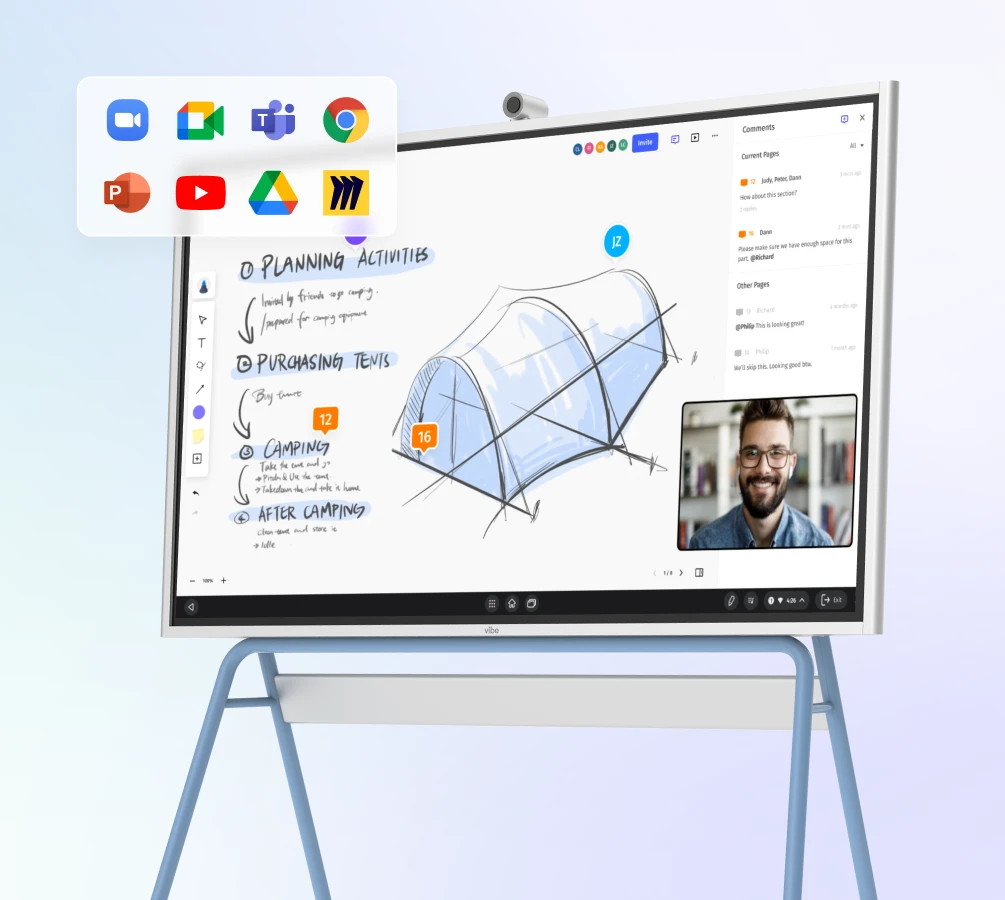 Vibe board S1 interactive whiteboard mounted on stand, featuring touchscreen display with collaboration interface.
Vibe board S1 interactive whiteboard mounted on stand, featuring touchscreen display with collaboration interface.


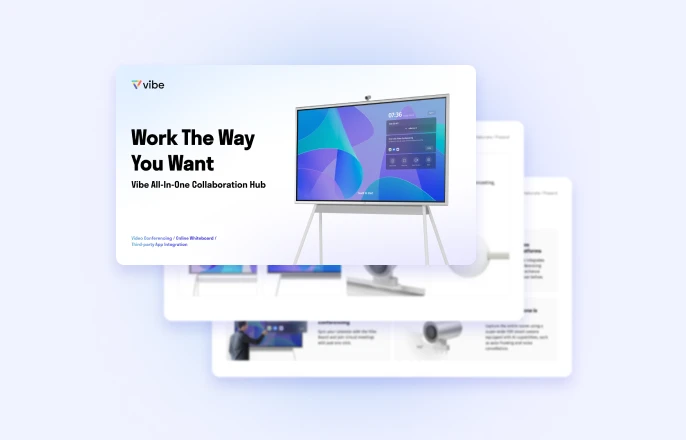


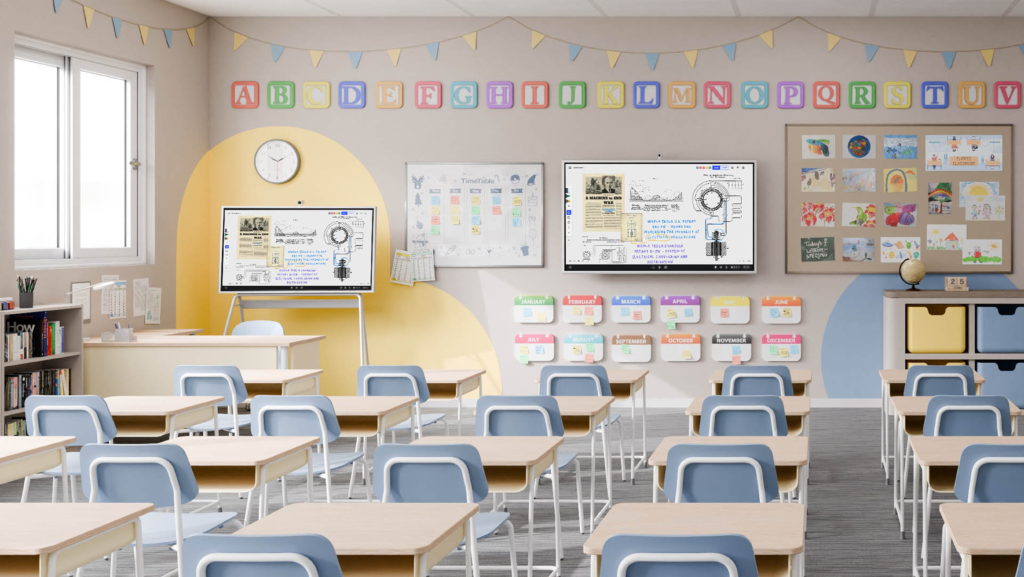

-1sbltxxq4FYxHrXrwJVLsCDNsXpqNa.webp)
-5Zp0pmSytvcuYDVs1LvuwplKuRneK0.webp)
